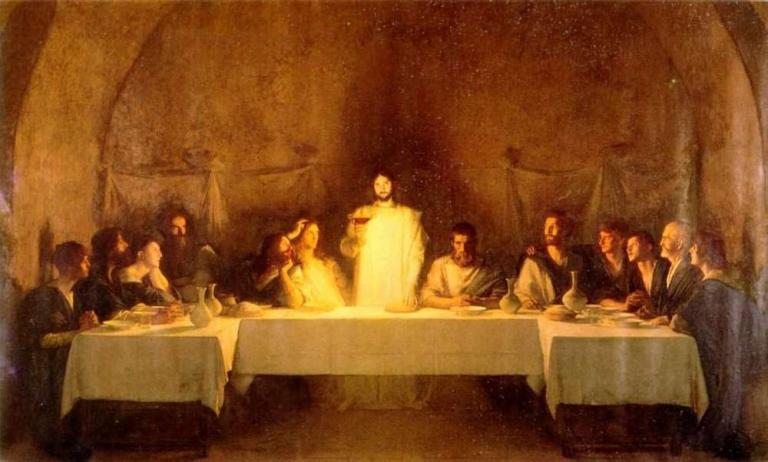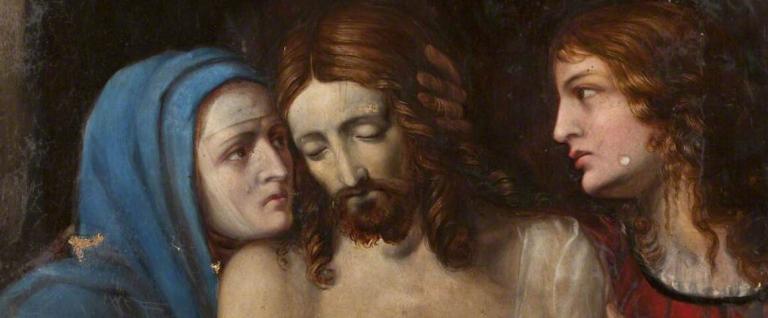Calvin College philosophy professor James K.A Smith has done a lot of good for today’s Church. He has made accessible such arcane subjects as postmodern philosophy and Radical Orthodoxy, and otherwise-impenetrable thinkers like Jacques Derrida and Charles Taylor. He is the unusual philosopher who talks about Pentecostal contributions to his field. His recent books on worship and desire have showed legions of young (and old!) readers the significance of liturgy and habits for Christian discipleship.
Now, however, he risks separating moral theology from dogmatic theology in an odd way. In a widely-read post at his blog on “orthodox theology,” he complains about the Christians who insist that orthodoxy must include adherence to the historic Christian view of marriage and sexuality. They don’t realize, he argues, that “this deployment of the term ‘orthodox’ is recent, innovative, and narrow.” Historically, he maintains, orthodoxy was understood as commitment to the great ecumenical creeds—Nicaea and Chalcedon. These creeds taught “the conciliar marks of the gospel”–namely, creation, Incarnation, the virgin birth, Jesus’ life, death, resurrection, and ascension, his second coming, the Trinity, the one holy, catholic and apostolic church, one baptism, and the hope of bodily resurrection.
But these zealots for a narrowly-conceived orthodoxy, Smith complains, are “reduc[ing] Christianity to a morality,” just as Kant did. They are taking second-order matters (my use of the term) and elevating them to first-order status—just as some Christians regard Christian non-violence, the mode of baptism, the ordination of women, and the rapture as necessary parts of orthodoxy. Bakers who are persecuted for refusing to bake cakes for gay weddings are not suffering for orthodoxy but for things that are not “at the very heart of Christian faith.” Smith concedes that these views of sexuality and marriage which the bakers are defending “have been the historic teaching of the church.” But they are “traditional” rather than “conciliar. If we regard them as central to orthodoxy, they will “start to overwhelm and supersede what the church has defined as orthodox.”
Derek Rishmawy, Wesley Hill, and Alan Jacobs have given thoughtful responses to Smith. I want to approach Smith’s challenge from a historical perspective.
Let’s think back to three Church crises that bear some resemblance, I suggest, to our current marriage crisis: the slavery crisis (the Civil War), the Jewish crisis (Nazism), and the segregation crisis (the Civil Rights movement). In each of these crises the Church debated whether the issue at hand was central to Christian faith (what we would call “orthodoxy”).
In the antebellum period, there were many Christians in both South and North who said slavery was a matter of adiaphora or “things indifferent,” in other words, not central to Christian faith but matters over which good (orthodox!) Christians could agree to disagree. Many would have said, using Smith’s terms, that slavery was not mentioned in the creeds and therefore should not be considered a test for orthodoxy. Now let’s zoom back to last week in Charlottesville. I wouldn’t be surprised if some of the alt-right people at the C’ville debacle thought of themselves as creedal Christians. They might say that slavery is acceptable for Christians as long as they accept what is explicitly stated in the creeds. I could be wrong, but I would guess that Smith would have difficulty allowing them into the orthodox tent.
In the 1930s the German Christian Churches banned the use of the Old Testament in Sunday morning worship. They tacitly supported the Nazi program to persecute and then kill Jews. They could have easily said that there is nothing in the Nicene or Chalcedonian creeds that speaks to this issue. Both creeds mention only “the prophets” and proceed from creation to redemption as if the history of Israel does not matter. Or at least one could read them this way if one pays attention only to the explicit language and not to implications that “the prophets” might raise. In other words, they could have appealed to the creeds and said that good Christians can disagree on “the Jewish question” and still be orthodox. Since this question is not addressed by the creeds, it is like the questions of baptismal mode and eschatology where otherwise-orthodox Christians disagree. Could those German Christians in this movement who affirmed the creeds be accepted as orthodox?
In the 1960s Christians debated racial segregation. Many Christians insisted that this is a cultural and not biblical question. Some argued from the creeds, using something like Smith’s reasoning: since it is not addressed by the creeds, it should not be made a test of orthodoxy. You can be orthodox, they said, and also keep black Christians out of your church or restaurant or country club. Those who make race a matter of orthodoxy are using standards that are “recent, innovative and narrow.”
What would orthodox Christians say today? I think we would have to search long and hard to find a respected pastor or theologian who says, “Good orthodox Christians can practice racial segregation in their churches and communities because this is not central to the faith.” Our search would be equally difficult to find any theologian or respected pastor who would announce that you can be orthodox and also affirm slavery or discrimination against Jews.
In other words, orthodoxy entails beliefs that go beyond the letter of the creeds, and this has been generally acknowledged by the great theologians of the Church. They have argued this—that orthodoxy includes convictions about matters not explicitly stated in the creeds—for a number of reasons, among which are two statements in the creeds.
The first statement is in the third article of the Nicene Creed: We believe in the Holy Spirit . . . who spoke by the prophets. By “prophets” is meant, for most interpreters in the Great Tradition, the Old Testament. In other words, this phrase teaches the divine inspiration of the First or Old Testament and its most important teachings.
The second statement in the Nicene Creed that points to convictions of orthodoxy not explicitly stated in the creed is from the last article: We believe in one holy catholic and apostolic church. The Great Tradition has interpreted this to mean that orthodoxy regards as normative not only the inspiration of the New Testament (apostolic) but also the central teachings of the Church as it has interpreted Scripture.
Among those central teachings has been the marriage of a man and woman, from which follows everything the Church has taught on sexuality. It is of utmost significance that the principal metaphor in both Testaments for God’s relationship to his people is marriage: YHWH is married to Israel, and Christ is married to the church. That is one reason why the questions that Smith thinks comparable—usury, eschatology, women’s ordination, mode of baptism—have typically been regarded as further away from the center of the faith.
It is also why marriage between a man and woman, and the view of sexuality which it entails, has always been considered as not simply a “traditional” teaching, as Smith puts it, but part and parcel of orthodoxy. The creeds point not only to the way of redemption but also to an order of creation that is redeemed. Marriage as central to orthodoxy is therefore not “recent, innovative, and narrow.” Instead, it is separation of moral theology (on a matter as paramount as marriage) from dogmatic theology that is recent, innovative, and narrow.











